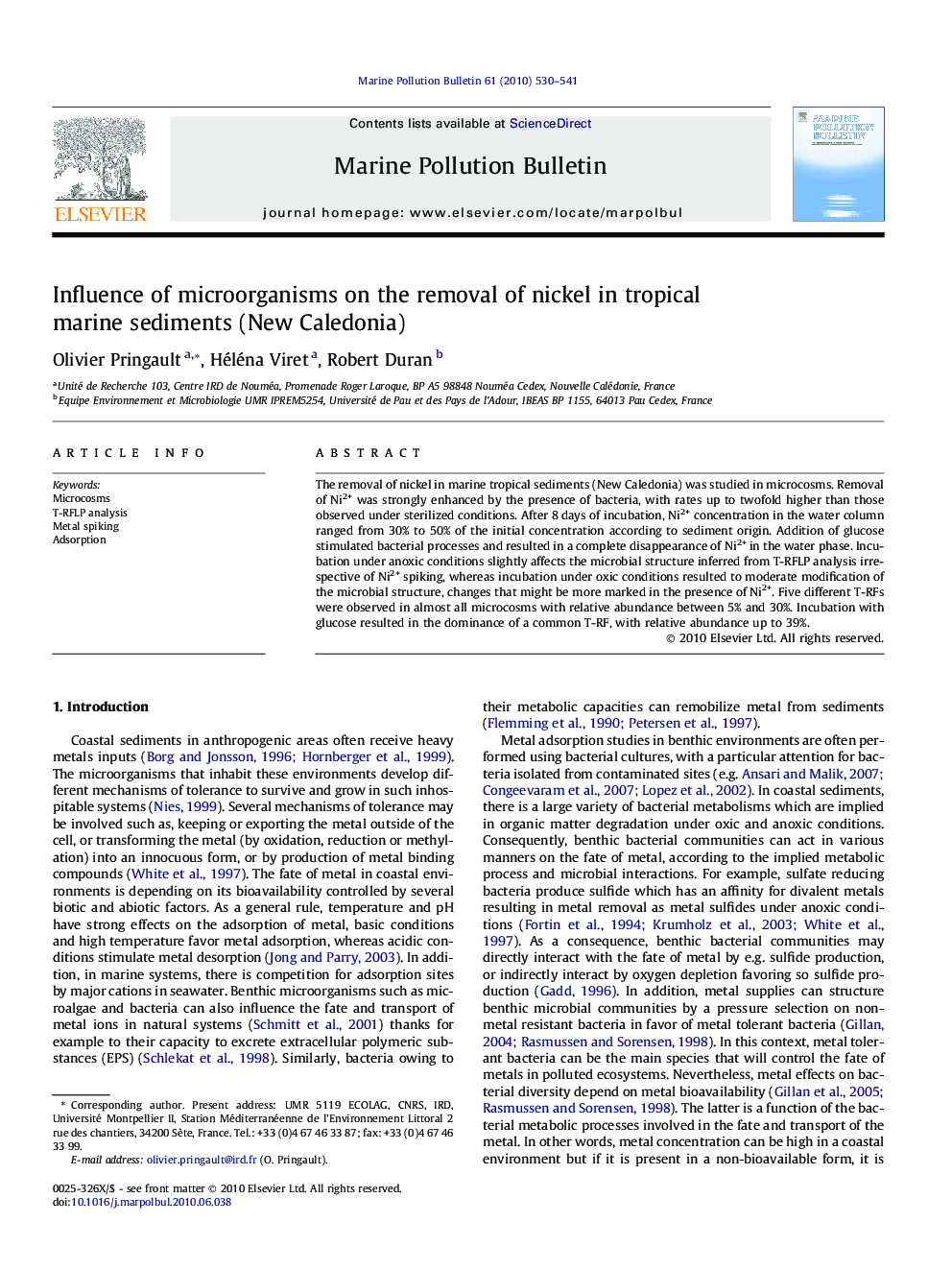| Article ID | Journal | Published Year | Pages | File Type |
|---|---|---|---|---|
| 6362168 | Marine Pollution Bulletin | 2010 | 12 Pages |
Abstract
The removal of nickel in marine tropical sediments (New Caledonia) was studied in microcosms. Removal of Ni2+ was strongly enhanced by the presence of bacteria, with rates up to twofold higher than those observed under sterilized conditions. After 8Â days of incubation, Ni2+ concentration in the water column ranged from 30% to 50% of the initial concentration according to sediment origin. Addition of glucose stimulated bacterial processes and resulted in a complete disappearance of Ni2+ in the water phase. Incubation under anoxic conditions slightly affects the microbial structure inferred from T-RFLP analysis irrespective of Ni2+ spiking, whereas incubation under oxic conditions resulted to moderate modification of the microbial structure, changes that might be more marked in the presence of Ni2+. Five different T-RFs were observed in almost all microcosms with relative abundance between 5% and 30%. Incubation with glucose resulted in the dominance of a common T-RF, with relative abundance up to 39%.
Keywords
Related Topics
Physical Sciences and Engineering
Earth and Planetary Sciences
Oceanography
Authors
Olivier Pringault, Héléna Viret, Robert Duran,
